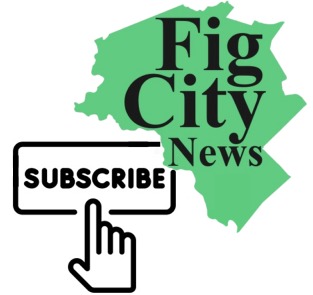The Newton Free Library was the site of a sometimes contentious meeting between Newton Highlands residents and the Newton Public Works Department (DPW) on November 14. This was the sixth community meeting addressing the Newton Highlands Village Enhancement Project, which could create substantial changes to Newton Highland’s center. The Project is tentatively scheduled for 2032. Nearly 50 people attended in person, with many more participating remotely.
The meeting began with a presentation by Margot Spiller of Environmental Partners, one of three consulting firms assisting the City on the Project. Ms Spiller outlined the project goals, which include improving accessibility and safety, expanding community spaces, adding art, benches, and landscaping, and improving infrastructure for stormwater mitigation.
Major elements of the project include:
- Eliminating two right-turn lanes at the intersection of Lincoln and Walnut Streets,
- Relocating parking spaces near the center to elsewhere in the neighborhood,
- Adding bike lanes,
- Installing plantings and water-permeable materials for sidewalks and streets to absorb stormwater,
- Adding larger areas for social gatherings, and
- Eliminating the turn-around/spur lane at the corner of Walnut and Forest Streets to create a “parklet” surrounding the Walnut Street Fountain.
Ms Spiller highlighted changes that were in response to feedback from prior community meetings, notably adding several parking spaces.

Next, Jim McGonagle, Commissioner of Public Works, took questions and criticisms for nearly two hours. City officials and consultants responded to some comments immediately, but most often, Mr. McGonagle said that the project team would review and discuss comments, then respond in the future. Initially, Mr. McGonagle said he expected to present the final concept to the City Council on February 25, but later said the project team would decide on next steps, including delaying the City Council presentation and possibly adding a seventh community meeting.
Based on prior meetings, the biggest project goal for the Highlands community appears to be to move underground the unsightly utility wires throughout the village center. City officials have stated that Newton would not pursue relocation of the above-ground utility wires, citing high costs and disruptions.
At the November 14 meeting, community attendees spoke consistently against the changes around the Walnut Street Fountain, the elimination of right-turn lanes, and the relocation of parking spaces. Several local business owners were critical of creating cycling infrastructure. However, other attendees supported more cycling infrastructure, contending that cycling is growing in the neighborhood.
Commenting on the meeting afterwards, Newton Highlands Neighborhood Area Council (NHNAC) President Jeremy Freudberg said, “I was pleased that the DPW has been able to make some compromises in response to community feedback, for example by restoring three of the eight parking spaces which had been proposed to be removed on Walnut Street. Unfortunately, other useful suggestions were dismissed without good cause. DPW has not exhibited creative thinking in trying to find a better way to accommodate the increasing number of shuttle buses in the village, which impede traffic and are hazardous to bicyclists.”
He continued, “On the issue of the potential of undergrounding utilities I have found DPW’s explanation for why this cannot be investigated now to be inconsistent and confusing. Instead of kicking the can down the road, putting effort into an honest investigation of cost and feasibility of undergrounding now would allow stakeholders to make an informed decision about an enhancement which has indisputable benefit.”
Among the in-person attendees were City Councilors Alan Lobovits, Martha Bixby, Rena Getz, Stephen Farrell, and Julie Malakie, and NHNAC members Jeremy Freudberg, Barbara Darnell, Srdjan Nedeljkovic, Amy Wayne, Emily Manus, Larry Rosenberg, Robert Fizek, and Groot Gregory.
UPDATE: NHNAC meeting with City Councilors on November 26
After the November 14 meeting, City Councilors Alan Lobovits and Martha Bixby decided to play a facilitating role between the Highlands community and the DPW. The Councilors set up a meeting with the DPW for early December, and on November 26, the NHNAC met to provide the two Councilors with the NHNAC’s consensus view of the project elements and goals.
Members of the NHNAC were in general agreement about the following Project elements:
- Retain right-turn lanes at the Lincoln and Walnut Street intersection.
- Maintain the existing number of parking spaces on Walnut Street.
- Maintain an island around the Walnut Street Fountain.
- Ensure ten-foot-wide sidewalks in the neighborhood center.
- Include undergrounding of utilities as an option in the neighborhood center.
Councilors Julie Malakie and Stephen Farrell also participated in the November 26 meeting. Councilor Farrell was critical of the DPW for not working more closely with the neighborhood in this project, saying that the DPW should be sitting down with then NHNAC and working together to find solutions to neighborhood concerns.






